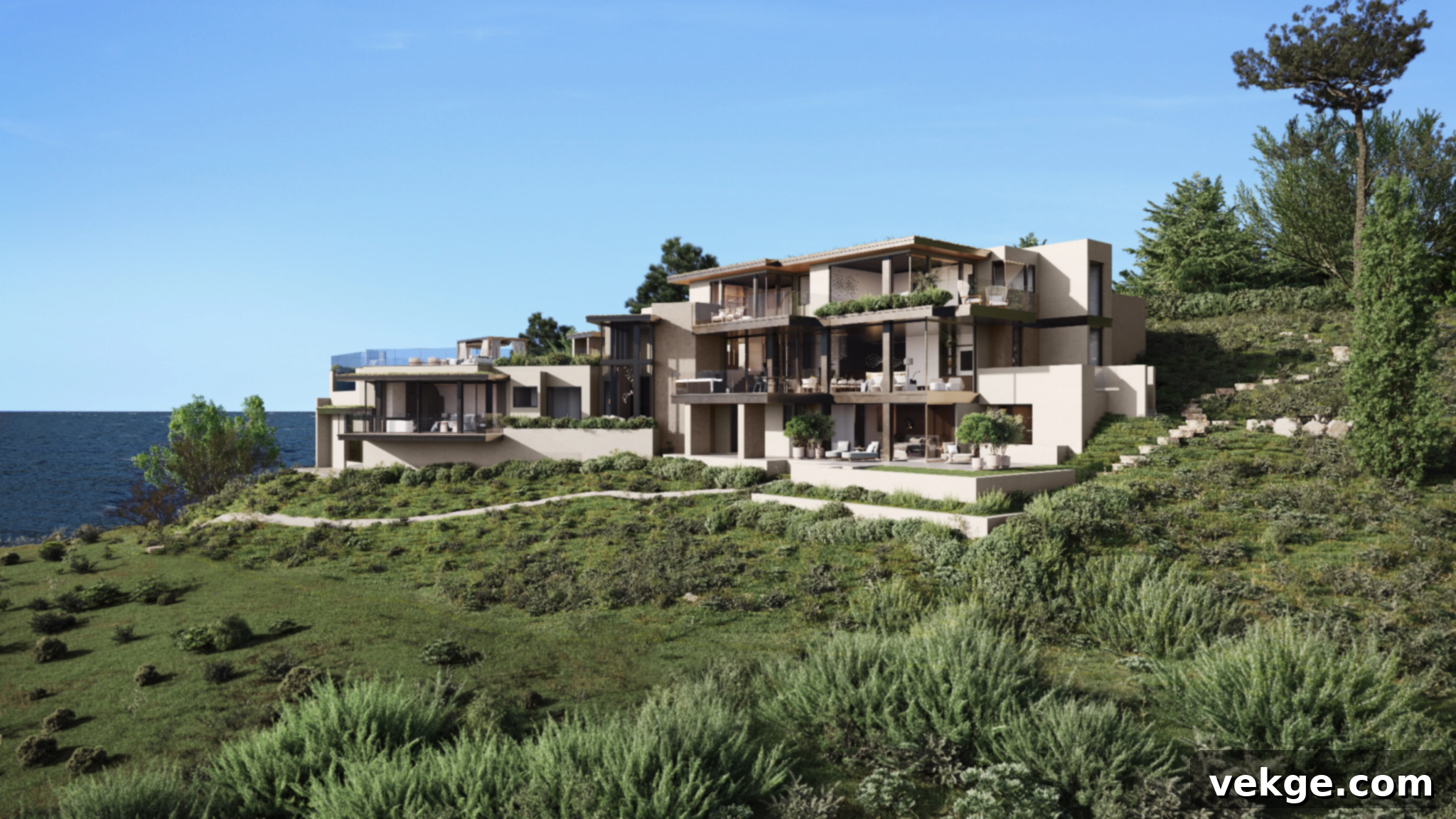Unlock Your Dream Home: The Transformative Power of 3D Visualization in Interior Design and Renovation
Embarking on a home renovation or interior design project is exciting, yet it often comes with a nagging question: “Will all these elements truly harmonize in my space?” We’ve all been there, surrounded by paint swatches, fabric samples, and tile options, trying to imagine the final outcome. While physical samples offer a glimpse, they inherently lack the crucial context of scale, natural light, and spatial relationships. You can’t see how afternoon sun will hit that new countertop, or if a stylish pendant light will cast an unwelcome glare on your television, or even if your dream kitchen island will inadvertently obstruct a crucial walkway.
This is precisely why embracing 3D visualization before making any significant real-world commitments has become an indispensable tool for confident decision-making. Virtual modeling allows you to transcend the limitations of physical samples, providing an immersive, true-to-life preview of your future home.
3D visualization technology brings your vision to life at true scale, rendered under realistic daylight and evening conditions, complete with your chosen layout and finishes. This powerful preview empowers you to select a design direction with unwavering confidence, significantly reducing the likelihood of expensive returns, reorders, and, most importantly, project regrets. It’s not just about seeing; it’s about experiencing your space before it even exists.
Why Visualize Before You Buy: The Ultimate Design Confidence Booster
Our brains thrive on context. Holding a solitary cabinet door in your hand, no matter how beautiful, is fundamentally different from experiencing an entire wall of custom cabinetry bathed in the 4 p.m. sunlight next to a window. Similarly, a single floor tile on a countertop cannot convey the subtle yet significant impact that full grout lines and an overall pattern will have on the ambiance of a compact bathroom. Visualization masterfully draws all these disparate decisions into one coherent, crystal-clear picture, enabling you to:
- Compare Design Schemes Side-by-Side: Effortlessly evaluate various combinations, such as different cabinet colors paired with countertop materials, slab backsplashes, and hardware choices. See how a warm wood tone interacts with a cool stone or a vibrant paint color.
- Verify Proportions and Clearances: Accurately gauge the scale of furniture pieces like a new sofa, the optimal width of a kitchen island, the ideal height for a mirror, and ensure practical door swings. Avoid the disappointment of furniture that’s too big or too small for your room.
- Test Mood and Lighting Conditions: Experience your space in diverse lighting scenarios – morning light, soft dusk, and cozy nighttime ambiance – long before you invest in any light fixtures or even a single can of paint. Understand how different light temperatures and fixture placements affect the overall feeling.
- Catch Potential “Gotchas” Early: Identify and rectify design flaws that would be costly to fix post-installation. This could include a refrigerator door that collides with the island, a vanity sconce mounted at an impractical height, or inadequate clearance around dining areas.
Should the task of building complex 3D scenes yourself seem daunting, a seasoned 3D visualization company can transform simple room measurements, a few foundational photos, and your inspiration links into a photorealistic preview. This expert assistance allows you to make informed decisions with minimal second-guessing, ensuring your project aligns perfectly with your vision from the outset.
What to Prep: Assembling Your Simple “Design Packet” for Visualization
You don’t need intricate architectural blueprints to begin. A well-organized, straightforward folder of information is perfectly sufficient to kickstart your visualization journey. This “design packet” acts as your comprehensive guide:
- Accurate Measurements: Provide the essential dimensions of your space – length, width, and ceiling height. Also include rough measurements for windows and doors, noting their placement. The more precise you are, the more accurate your 3D model will be.
- Comprehensive Photos: Capture photos from each corner of the room, offering a full 360-degree view. Additionally, take pictures looking into the room from adjacent spaces to provide context for transitions and flow.
- Details of Fixed Elements to Keep: Document any existing elements you plan to retain, such as flooring, built-in shelving, existing appliances, or unique architectural features. These will be integrated into the virtual model.
- Inspiration Images (3–6): Gather a small collection of images that articulate the desired feeling or aesthetic you aspire to create. Focus on the overall mood and style rather than just specific products. These images help the visualizer understand your taste and vision.
This meticulously prepared packet becomes your North Star throughout the entire project lifecycle – from initial visualization, through the procurement and ordering of materials, and finally, when briefing your contractors. It ensures everyone involved is working towards a unified, clearly defined goal.
Kitchen First: Where 3D Visualization Saves the Most Stress and Expense
Kitchens are often described as the heart of the home, a complex choreography of movement involving cabinet doors, drawers, and hungry people all moving simultaneously. A high-quality visual render allows you to meticulously examine:
- Human-Centric Clearances: Observe the critical pathways around the island, ensure sufficient swing space for refrigerator and dishwasher doors, and verify that someone can comfortably stand at the sink while another person moves behind them without awkward bumping.
- Vertical Balance and Flow: Evaluate how upper cabinets elegantly meet the range hood, integrate with a run of windows, or interact with an open-concept ceiling. This ensures visual harmony and optimal storage.
- Material Harmony and Cohesion: See how a quartz countertop with warm veins complements a cooler cabinet paint color and matte hardware finishes. These material choices are experienced together, not merely imagined in isolation, preventing clashes and ensuring a cohesive look.
- Layered Lighting Strategies: Test various lighting scenarios, including under-cabinet task lighting for food prep, a soft evening wash for ambiance, and island pendants that provide adequate light without being harsh or creating unflattering shadows.
If you find yourself deliberating between two distinct kitchen layouts – perhaps a range on the wall versus one integrated into the island – visualize both options. Spending just a few minutes “living” within each virtual model almost invariably reveals the clear winner, saving you from a potentially expensive and inconvenient mistake.
Bathrooms: Small Rooms, Big Impact, Perfect for Precision Visualization
In bathrooms, every single inch speaks volumes. A detailed visualization is invaluable for fine-tuning the crucial elements within these compact but impactful spaces:
- Optimized Sightlines: Understand precisely what you and your guests will see when the door opens – ensuring a serene vanity wall greets the eye, rather than an immediate view of the toilet.
- Tile Scale and Placement: Observe how different large-format tiles can create a sense of calm and spaciousness in a small shower, and precisely where grout lines will fall, impacting the visual rhythm of the room.
- Mirror and Sconce Spacing: Ensure that your lighting fixtures are positioned to cast flattering light directly onto faces, not above or below them, eliminating harsh shadows and maximizing functionality.
- Integrated Storage Solutions: Plan the placement of recessed niches, storage towers, and shelving units, confirming they clear faucets, shower valves, and other fixtures, maximizing both utility and aesthetics.

Living + Dining Rooms: Where Proportions and Flow Reign Supreme
Have you ever fallen in love with a stunning sofa online, only to find it visually “disappear” or look dwarfed in your spacious, high-ceiling living room? 3D visualization provides the indispensable foresight to correctly size up (or down) your furnishings and decor, ensuring every piece contributes to a harmonious whole:
- Rugs That Truly Anchor Zones: Confirm that your chosen rug is appropriately sized to define and ground specific areas, such as the seating arrangement. A helpful rule of thumb, easily visualized, is ensuring at least the front legs of all major seating pieces rest comfortably on the rug.
- Art and Mirrors Scaled to the Wall: Precisely scale artwork and mirrors to complement the wall they adorn, especially when positioned above mantels, consoles, or expansive sectional sofas. Avoid pieces that look either too small or overwhelmingly large.
- Optimal Lighting Height Comparison: Visually compare pendant lights at various heights – for instance, 30″, 32″, and 34″ above a dining table. This allows you to select the height that feels most comfortable and aesthetically pleasing from all seating positions, both standing and seated.
- Functional Traffic Flow: Analyze how traffic will naturally flow through the room during everyday activities and when hosting guests. Ensure clear paths around furniture, ease of access, and comfortable spacing for social interactions.
Curb Appeal: Capturing the Essence from Day to “Blue Hour”
A home’s exterior possesses a dual personality, presenting itself distinctly in the bright light of day and the soft, ambient glow of evening. It is immensely beneficial to visualize both scenarios to perfect your curb appeal:
- Front Door Color Against Siding/Brick: See how your chosen front door color interacts with the actual siding or brick of your home. A color that looks great on a small swatch might appear very different on a large surface.
- Thoughtful Exterior Lighting: Ensure cut-off sconces provide a warm, inviting glow that illuminates your entryway without spilling harsh light into your neighbors’ windows, creating a welcoming and respectful atmosphere.
- Layered Plant Masses: Visualize how different plant heights and textures can balance and enhance a tall facade, adding depth, softness, and visual interest to your landscaping.
- Legible House Numbers and Mailbox Placement: Confirm that house numbers and the mailbox are strategically placed to be easily readable from the street without appearing overly prominent or shouting for attention, blending functionality with aesthetics.
How to Give Feedback: Achieving “Yes, That’s It!” Visuals Fast
Effective feedback is less about playing “spot the difference” and more about fostering a collaborative conversation. Adopting this rhythm can significantly shorten the number of revision rounds and accelerate the design process:
- Lead with Feelings and Overall Impressions: Begin your feedback by describing how an element makes you feel. For instance, instead of just saying “change the island,” try “The island feels a bit heavy – could we explore lightening the counter edge or perhaps incorporating some open shelving at one end to give it more visual lightness?”
- Change One Big Thing at a Time: To maintain clarity and focus, concentrate on one significant design change per feedback round. For example, address the cabinet color or the backsplash, but avoid requesting changes to both in the same iteration. This focused approach helps isolate the impact of each adjustment.
- Maintain a Decision Log: Keep a simple, running record of decisions made, complete with dates and specific choices. This log serves as a valuable reference, helping you recall what you liked (and, crucially, why) as the project evolves.
Most rooms achieve a clear, finalized vision within just 1–2 quick iterations when feedback is provided in a focused, constructive manner, ensuring efficient progress and satisfactory results.
From Picture to Project: Making Your Virtual Vision a Tangible Reality
A stunning render is merely the first step; the true magic lies in leveraging it as a robust bridge to the actual construction or installation phase. Your 3D visualizations are powerful tools to guide your project to a successful completion:
- Save Detailed Crop Views for Installers: Extract specific, high-resolution detail crops, such as outside tile corners, trim terminations, or precise mirror and sconce spacing. These detailed views provide invaluable guidance for your installers, eliminating ambiguity and ensuring precision.
- Export Plan Views with Centerlines and Dimensions: Generate a clear plan view from your 3D model, complete with centerlines and critical dimensions. This blueprint removes all guesswork regarding appliance clearances, precise pendant spacing, and accurate rug placement, ensuring everything fits perfectly.
- Compile a Comprehensive Link List: Gather and organize all product links for every visible item in your finalized render – from paint colors and cabinet pulls to specific lighting fixtures. This ensures that the physical elements you order precisely match the beautiful picture that originally captivated you.
If you’re collaborating with a contractor, bring these comprehensive visuals to your kickoff meeting. They are far more effective than any mood board at reducing those frustrating “I thought you meant…” moments, fostering clear communication and alignment from day one.
Common Myths About 3D Visualization (and Kinder Truths)
- Myth: “I’ll know it when I see it in person.”
Truth: By the time you “see it in person,” you’ve likely already purchased, installed, and potentially paid to remove it if it doesn’t meet expectations. Trying it on virtually first is a far kinder approach to both your budget and your peace of mind. - Myth: “Renders are too perfect to be useful in a real home.”
Truth: While renders can be polished, effective visualization companies focus on realistic lighting and material representation (avoiding showroom-style gloss). Realistic visuals are designed to help you plan for your actual home and its conditions, not just a styled catalog spread. - Myth: “It’s only for big, expensive renovations.”
Truth: Even a modest refresh involving new paint, lighting, and a rug can significantly benefit from a quick virtual preview. This is especially true in smaller rooms where the interplay of proportions and elements is critical and highly sensitive to scale.

A Simple Starting Plan for Your 3D Visualization Journey (No Overwhelm)
Ready to leverage the power of virtual design without feeling overwhelmed? Here’s a straightforward plan to get started:
- Identify One Problematic Space: Begin by focusing on a single area that causes you the most decision fatigue – perhaps that challenging kitchen corner, a tiny bathroom you want to maximize, or a front entry that simply feels uninspired.
- Compile Your Design Packet: Gather your essential information: accurate measurements, comprehensive photos from various angles, and a curated collection of inspiration images that capture the desired mood.
- Request Two Versions: Ask for two distinct design versions for your chosen space: one representing the safe, practical choice, and another that embodies that bold, imaginative idea you’ve secretly harbored.
- “Live” with the Visuals: Spend a full day interacting with both virtual versions. View them during your morning coffee, observe how the afternoon sun affects them, and see how they feel under evening lamps. Then, confidently choose the version that consistently brings a smile to your face.
When you can clearly envision the future version of your space – rendered at a realistic scale and under true-to-life lighting conditions – the entire design process transforms. It becomes calmer, more controlled, and undeniably more enjoyable. Whether you choose to DIY a simple model or collaborate with an experienced professional, 3D visualization effectively replaces stressful guesswork with the satisfying certainty of “Yes, that’s absolutely it.” And that profound sense of assurance is truly the most valuable asset you can bring to any home design project.
